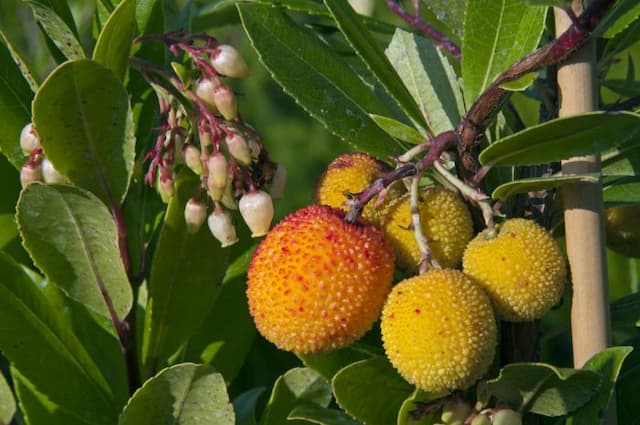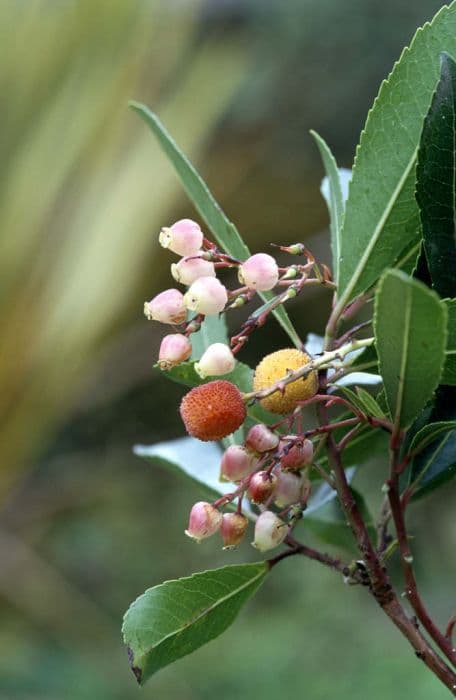Rhododendron 'Mrs T.H. Lowinsky' Rhododendron 'Mrs T.h. Lowinsky'

ABOUT
'Mrs T.H. Lowinsky' is a vigorous evergreen shrub to 3m tall, with broad, dark, glossy leaves, to 9cm long, and dense trusses of mauve buds opening to funnel-shaped, white-centred lilac flowers, heavily-spotted orange-brown in the throat, in early summer
About this plant
 Names
NamesSynonyms
Mrs. T.H. Lowinsky Rhododendron, Mrs. Th. Lowinsky Azalea.
Common names
Rhododendron 'Mrs. T.H. Lowinsky'
 Characteristics
CharacteristicsLife cycle
Perennials
Foliage type
Evergreen
Color of leaves
Green
Flower color
Pink
Height
6 feet 72 inches (1.83 meters)
Spread
6 feet 72 inches (1.83 meters)
Plant type
Shrub
Hardiness zones
5
Native area
Asia
Benefits
 General Benefits
General Benefits- Ornamental Value: Rhododendrons are widely appreciated for their beautiful flowers, which come in a variety of colors and add aesthetic appeal to gardens and landscapes.
- Shade Tolerance: Rhododendrons can thrive in areas with partial shade, making them versatile and suitable for many garden settings.
- Erosion Control: Their root systems can help stabilize soil in sloped areas, preventing erosion.
- Wildlife Habitat: Provide shelter and nesting sites for birds, and their flowers attract pollinators such as bees and butterflies.
- Seasonal Interest: Besides their spring blossoms, many rhododendrons offer evergreen foliage, contributing to the year-round interest in the garden.
- Privacy Screen: They can be used to create natural borders or privacy screens due to their dense growth habits.
- Low Maintenance: Once established, they require minimal care, making them convenient for gardeners of all skill levels.
- Diversity: With many species and cultivars available, rhododendrons offer a wide range of sizes, colors, and growth habits to fit different garden needs.
 Medical Properties
Medical PropertiesThis plant is not used for medical purposes.
 Air-purifying Qualities
Air-purifying QualitiesThis plant is not specifically known for air purifying qualities.
 Other Uses
Other Uses- Rhododendron honey can be produced from bees that primarily feed on rhododendron flowers, although it must be noted that this honey can be potentially toxic if the plants contain certain alkaloids.
- Dye can be extracted from the flowers, leaves, and bark of the rhododendron for use in coloring fabrics or crafts.
- Decorative purposes in art installations, where branches and blooms can be used for their aesthetic value in creating natural art displays.
- Insect-repellent potential, as some rhododendrons contain compounds that are unpalatable or toxic to certain insects.
- Leaf gall, a unique growth caused by fungus or pests on rhododendron leaves, can be used in craft or education to show plant-insect interactions.
- Cut flowers from the rhododendron can be used in floral arrangements to add vibrant colors and lush foliage.
- Rhododendron wood, although not commonly used, can be crafted into small items like handles, buttons, or inlays for decorative woodworking projects.
- As a natural mulch, fallen rhododendron leaves can provide acid-rich cover for other plants that thrive in similar soil conditions.
- During festive seasons, rhododendron blooms and branches can be used to create holiday wreaths and other decorations.
- The thick foliage of rhododendron can provide nesting sites and shelter for various species of birds and small mammals.
Interesting Facts
 Feng Shui
Feng ShuiThe Rhododendron is not used in Feng Shui practice.
 Zodiac Sign Compitability
Zodiac Sign CompitabilityThe Rhododendron is not used in astrology practice.
 Plant Symbolism
Plant Symbolism- Beware: Rhododendron, also known as Azalea, can symbolize caution or warning due to the plant's toxicity if consumed.
- Abundance: The full, lush blossoms of the Rhododendron can represent an abundance of beauty or wealth.
- Elegance: With its attractive flowers and sophisticated appearance, the Rhododendron could symbolize elegance and refinement.
- Homecoming: In some contexts, Rhododendrons may symbolize a coming home or a return, possibly because it is a common sight in gardens.
- Temperance: The Rhododendron is sometimes associated with temperance and moderation, as its own growth habits require a balance of conditions to flourish.
 Water
WaterRhododendrons should be watered thoroughly during the growing season, ensuring that the water penetrates the root zone. For the Rhododendron 'Mrs T.h. Lowinsky', water when the top inch of soil feels dry; this may be about once a week, but frequency depends on climate conditions. It's best to use 1-2 gallons of water per plant for each watering session. During hot spells, additional watering may be necessary to prevent stress. Reduce watering in the fall and further in the winter when the plant is dormant, but do not let the roots dry out completely.
 Light
LightRhododendron 'Mrs T.h. Lowinsky' flourishes best in dappled shade. A spot that receives filtered sunlight beneath tall trees is ideal. Avoid full sun, which can scorch the leaves, and deep shade, which can inhibit blooming. East-facing locations that provide morning sun and afternoon shade are often perfect for this rhododendron.
 Temperature
TemperatureRhododendron 'Mrs T.h. Lowinsky' prefers cooler conditions and does best in temperatures ranging between 50°F and 70°F. It can tolerate a minimum temperature down to about -5°F and a maximum temperature of 80°F, although prolonged exposure to these extremes can be detrimental. Ideally, maintain a steady range of 60°F to 70°F during the growing season.
 Pruning
PruningPrune Rhododendron 'Mrs T.h. Lowinsky' to maintain shape and remove dead or diseased wood. Pruning is best done after the plant has bloomed, typically in late spring or early summer. Removal of spent flower clusters can promote plant health and vigor. Pruning too late in the season can remove next year's buds, so timing is critical.
 Cleaning
CleaningAs needed
 Soil
SoilRhododendrons require an acidic soil mix with a pH between 4.5 and 6.0. A good recipe for Rhododendron soil would include a blend of 50% peat moss or coco coir for acidity and water retention, 30% pine bark fines for aeration and drainage, and 20% perlite to further improve drainage and reduce soil compaction. Maintaining this soil quality and acidity is crucial for the health of the plant.
 Repotting
RepottingRhododendrons, commonly known as Azaleas, should be repotted every 2-3 years to prevent root-bound conditions and to refresh the soil. Repotting is typically done in late winter or early spring before new growth begins. Gently tease out the roots if they are circling, and repot into a slightly larger container with the appropriate soil mix to ensure continued health and growth.
 Humidity & Misting
Humidity & MistingAzaleas thrive in environments with high humidity, ideally between 50% to 60%. To maintain optimum humidity, they can be placed on a humidity tray with pebbles and water or grouped with other plants. Avoid positioning them near heating vents or air conditioners as this can reduce the ambient humidity around the plant significantly.
 Suitable locations
Suitable locationsIndoor
Keep in acidic soil, bright indirect light, high humidity.
Outdoor
Plant in dappled shade, acidic soil, mulch well, protect from wind.
Hardiness zone
5-8 USDA
 Life cycle
Life cycleThe life cycle of the Rhododendron 'Mrs. T.H. Lowinsky', commonly known as Rhododendron, begins with germination, which occurs when conditions such as temperature and moisture are favorable, leading to the emergence of the radicle and plumule from the seed. The seedling stage follows, characterized by the development of juvenile leaves and a root system that allows the plant to photosynthesize and grow independently. As the young Rhododendron transitions into the vegetative stage, it produces a woody stem and mature leaves, increasing in size and forming a bush-like structure. During the reproductive stage, typically in spring, it develops vibrant flowers that attract pollinators, crucial for sexual reproduction and the development of seeds within capsules. After pollination and seed development, the plant disperses seeds, completing the life cycle. Rhododendrons can live for many years, with individual plants often reaching full maturity in terms of size and flowering potential after several years of growth.
 Propogation
PropogationPropogation time
Spring-Early Summer
The most popular method for propagating the Rhododendron 'Mrs. T.H. Lowinsky', also commonly referred to as Rhododendron, is through semi-hardwood cuttings. This process typically begins in late summer after the new growth has begun to mature and harden slightly. A gardener would select a healthy branch, cut a piece 4 to 6 inches long, making sure it includes at least two sets of leaves. The lower leaves are then stripped away, and the cut end is dipped in rooting hormone to encourage root development. The prepared cutting is then inserted into a pot filled with a mix of peat and perlite, ensuring that the leaf node is beneath the surface. The cutting needs high humidity, so covering it with a plastic bag can help maintain the necessary environment. It's important to keep the soil moist but not waterlogged and to place the pot in a warm area with indirect light. Successful rooting often takes several weeks to a few months.









